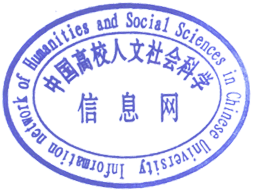关 键 词 :方位词;认知语言学;空间隐喻;概念延伸;“上”、“下”学科分类:语言学--汉语研究
本文采用认知语言学的视角,对汉语方位词“上”和“下”的语义进行系统分析。通过分析大量语料,探讨“上”、“下”在空间、时间、社会等级、心理状态等不同语义场中的延伸机制,揭示其认知动因和概念隐喻基础。文章认为,“上、下”不仅体现了人类对空间经验的普遍性,也反映了汉语使用者的文化观念和认知方式。
This paper employs a cognitive linguistics perspective to conduct a systematic analysis of the semantics of the Chinese directional terms “shang” and “xia”. Through the examination of extensive corpora, it explores the extension mechanisms of “shang” and “xia” across different semantic domains—including spatial, temporal, social hierarchy, and psychological states—revealing their cognitive drivers and conceptual metaphor foundations. The study argues that “shang” and “xia” not only embody humanity's universal spatial experience but also reflect the cultural perspectives and cognitive patterns of Chinese speakers.

